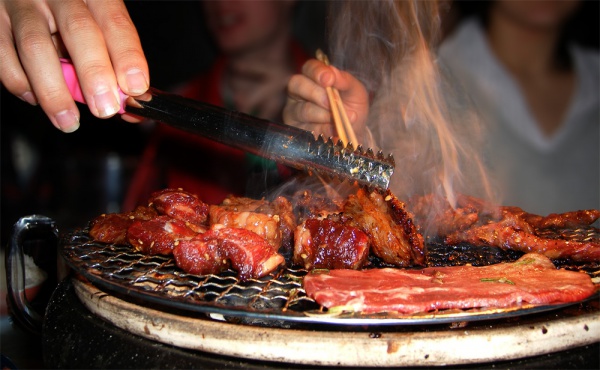Facts About Yakiniku
Yakiniku, which translates to "grilled meat" in Japanese, is a delectable cooking style where you grill small pieces of meat—typically beef and offal—alongside vegetables. The term originated in Japan, initially referring to Western-style barbecue. Over time, particularly during the early Shōwa period, it started to be associated with Korean cuisine.
In a yakiniku restaurant, patrons are given the pleasure of cooking their own food directly at the table using a grill. Once perfectly grilled, the meat and vegetables can be dipped in a variety of flavorful sauces before eating. Typically, traditional Korean side dishes like kimchi accompany the meal.
The history of yakiniku dates back to the Meiji Restoration when Japan legalized beef consumption. In a significant cultural shift, Emperor Meiji publicly consumed beef in 1873 to encourage this change. At that time, "yakiniku" referred specifically to grilled meat, while "iriniku" denoted roasted meat. The popularity of yakiniku surged after World War II, drawing influence from Korean dishes such as bulgogi and galbi. The introduction of ventilated barbecue systems in 1980 further boosted its popularity by minimizing smoke in restaurants.
Common ingredients in yakiniku include various cuts of beef, pork, offal, chicken, seafood, and an assortment of vegetables. In 1993, the All Japan Yakiniku Association designated August 29 as "Yakiniku Day" because the numbers 8 (ya), 2 (ni), and 9 (ku) phonetically resemble "yakiniku" in Japanese.
Yakiniku has also permeated popular culture, making appearances in mediums such as the Japanese version of the video game Tomodachi Life.
